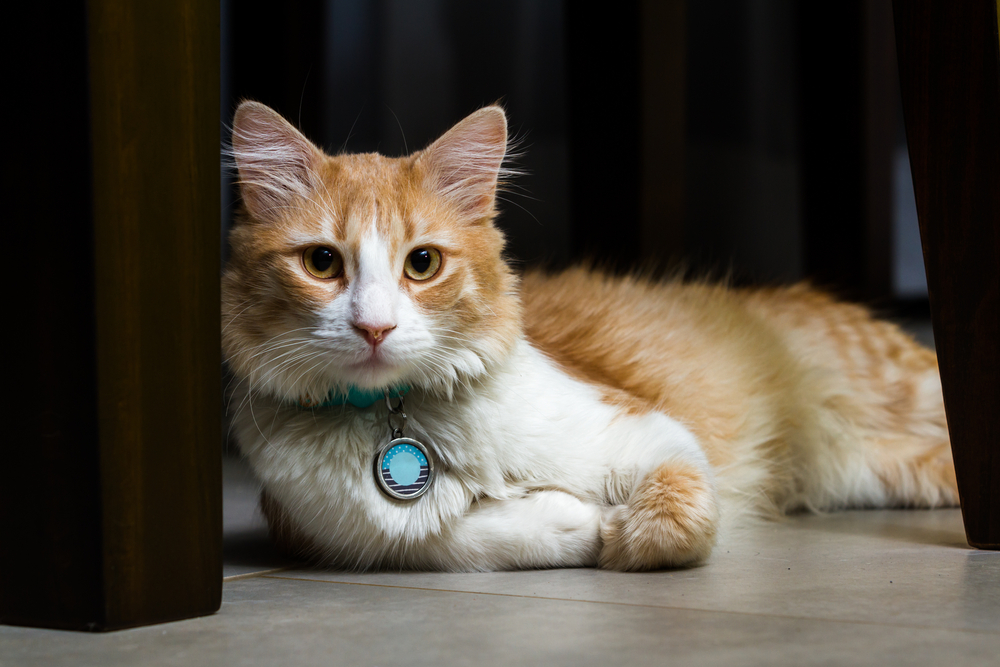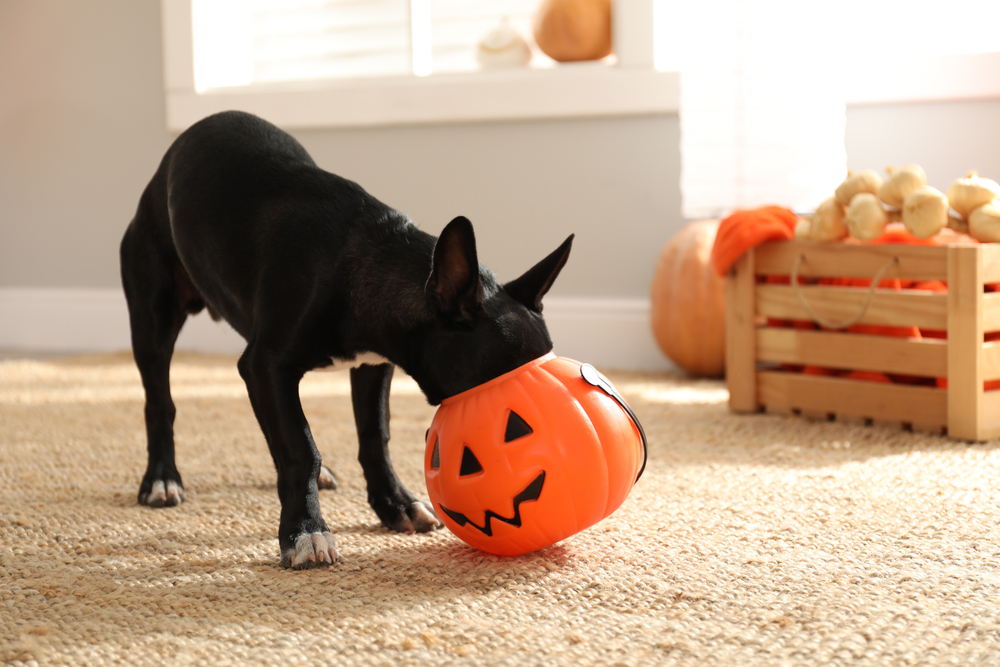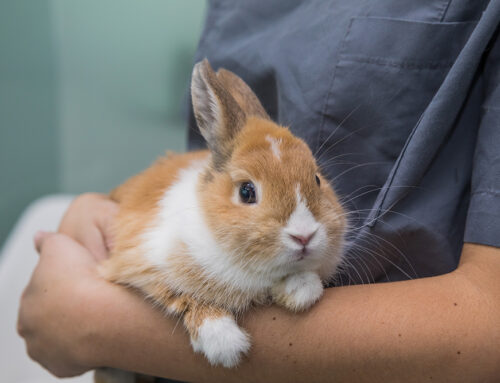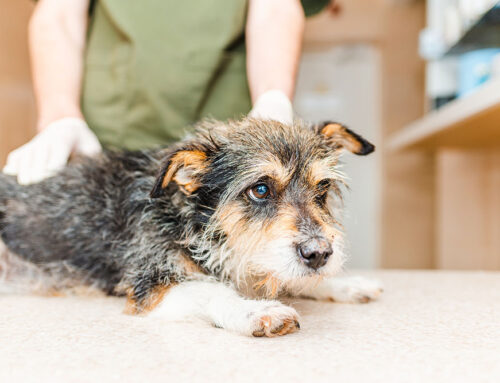Pumpkins, corn stalks, and watching Hocus Pocus on repeat signal fall season’s arrival, and Halloween helps kick things off. Kids rejoice each year over the chance to dress up, have fun with their friends, and most importantly, collect boatloads of sugary candy. However, your pet may not feel the same joy about Halloween, and some aspects can be downright dangerous for them. Parker Center Animal Clinic can help you prepare your pet for the festivities with these dos and don’ts, so everyone stays safe and happy this Halloween.
DON’T: Allow your pet to eat chocolate
Chocolate—arguably the best part of Halloween—is safe for people, but highly toxic to pets. Pets who ingest the stimulant-like compounds in chocolate can experience vomiting, anxiety, hyperactivity, tremors, seizures, or death. The toxins are more concentrated in darker, more pure chocolate, so baking chocolate and cocoa powder are the most dangerous. Chocolate toxicity is dose-dependent, meaning small pets who consume larger amounts will suffer more severe effects than large pets who consume a small amount. No matter the amount of chocolate your pet consumes, call your veterinarian immediately for advice.
DO: Keep all candy away from your pet
Remind children that candy is for humans only, and they must secure their Halloween haul out of reach. Chocolate isn’t the only candy-associated danger—macadamia nuts, raisins, and the sweetener xylitol can be seriously toxic for pets, too. Any toxin ingestion could land your pet in the emergency room, so avoid this Halloween nightmare by keeping them away from sweets.
DON’T: Force your pet to wear a costume
Pets who are accustomed to wearing clothing may not mind wearing a Halloween costume, but others may not feel so cooperative. If your pet is in the latter category, avoid costumes that could cause undue stress or anxiety. Try a festive collar or bandana to get into the Halloween spirit, while still honoring your pet’s preferences.
DO: Try on pet costumes before the big day
If your pet loves wearing clothes and you decide to get them a costume, try on the outfit and let your pet become acclimated prior to Halloween night. Ensure the costume fits well, doesn’t restrict movement, vision, or breathing, and doesn’t have parts your pet is tempted to chew. Always supervise pets while they are wearing a costume.
DON’T: Take your introverted pet to social outings
Does your pet run and hide when you have guests? Are they reluctant to greet strangers when you’re out and about on a walk? If your pet isn’t a social butterfly, remember that visitors and crowds can be a huge stressor, and respect their need for quiet by allowing them to retreat from the chaos.
DO: Provide pets a safe, quiet space away from people and noise
Set up a location in your home where your pet can get away and comfortably rest. If your neighborhood tends to have a lot of trick-or-treaters or you plan to throw a party, consider sending anxious pets to spend the evening with a familiar friend or family member in a quieter location.
DON’T: Let your pet escape through an open door
Trick-or-treaters on Halloween night mean you are constantly opening your door to greet guests and hand out candy. Anxious pets may see the open door as an escape from the chaos, while others may take the opportunity for a quick neighborhood jaunt. Loose pets could become hopelessly lost and—especially black cats—be subject to vandalism and cruelty on Halloween.
DO: Secure your pet inside
Prevent escape by keeping your pet inside, away from the open door, and the dangers of those out to cause trouble. For highly social pets who wish to calmly greet trick-or-treaters, try placing a low gate in the doorway for extra security and to prevent them from darting outside.
DON’T: Rely on a collar and ID tag to identify your pet
Your pet has a higher likelihood of becoming lost on Halloween, and ensuring up-to-date identification is key to bringing them safely home. Collars with ID tags with your name, address, and phone number are helpful for neighbors or good Samaritans who find your pet, but they aren’t 100% reliable. Collars can get lost outdoors, and a lost collar is not going to help a lost pet be returned to their owner.
DO: Invest in permanent identification for your pet

Microchipping can help animal control, animal shelters, and veterinary hospitals identify your pet if they are found without a collar or ID tag. The chip can be scanned with a special device that reveals your pet’s unique identification number, which can then be used to look up your contact information, and reunite you with your pet. Schedule a visit with your veterinarian to implant a microchip well before the holidays.
Halloween safety doesn’t have to be difficult when you follow our dos and don’ts and make an effort to see things from your pet’s perspective. Contact the team at Parker Center Animal Clinic if you have any questions about Halloween safety, or if you would like more information about microchipping your pet.






